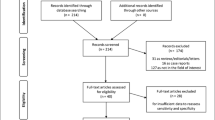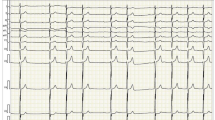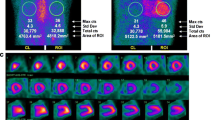Abstract
Purpose of Review
The two most common types of cardiac amyloidosis are caused by fibril deposits of immunoglobulin light chains (AL) and transthyretin (TTR), each with distinct prognosis and clinical management. Cardiac amyloidosis is under-recognized among heart failure patients with preserved ejection fraction (HFpEF). Bone-seeking tracers like 99mTc-PYP and 99mTc-DPD have long been used to identify cardiac amyloidosis, and more recently, to differentiate TTR from AL cardiac amyloidosis in symptomatic patients. However, results are mainly derived from single-center retrospective studies, with comparable but not standardized imaging protocols and interpretation criteria.
Recent Findings
The clinical scope of cardiac amyloidosis among HFpEF patients and current literature supporting the use of bone-seeking tracers for TTR cardiac amyloidosis are presented. The differences of imaging techniques for cardiac amyloid and bone disease evaluation, bone tracer pharmacodynamics, and imaging interpretation criteria for cardiac amyloidosis diagnosis are discussed. Finally, a diagnostic algorithm to use bone scintigraphy in cardiac amyloidosis diagnosis among HFpEF patients is proposed.
Summary
Bone scintigraphy with 99mTc-PYP or 99mTc-DPD can be a useful tool with high sensitivity and specificity for detecting TTR-related cardiac amyloidosis in patients with HFpEF. It is needed to standardize the imaging protocol and interpretation criteria and to perform prospective clinical studies.


Similar content being viewed by others
References
Papers of particular interest, published recently, have been highlighted as: • Of importance •• Of major importance
Bishu K, Redfield MM. Acute heart failure with preserved ejection fraction: unique patient characteristics and targets for therapy. Curr Heart Fail Rep. 2013;10:190–7.
Steinberg BA, Zhao X, Heidenreich PA, Peterson ED, Bhatt DL, Cannon CP, et al. Trends in patients hospitalized with heart failure and preserved left ventricular ejection fraction: prevalence, therapies, and outcomes. Circulation. 2012;126:65–75.
Yancy CW, Jessup M, Bozkurt B, et al. ACCF/AHA guideline for the management of heart failure: a report of the American College of Cardiology Foundation/American Heart Association task force on practice guidelines. Circulation. 2013;2013(128):e240–327.
Gertz MA, Dispenzieri A, Sher T. Pathophysiology and treatment of cardiac amyloidosis. Nat Rev Cardiol. 2015;12:91–102.
Ton VK, Mukherjee M, Judge DP. Transthyretin cardiac amyloidosis: pathogenesis, treatments, and emerging role in heart failure with preserved ejection fraction. Clin Med Insights Cardiol. 2014;8(Suppl 1):39–44.
Mohammed SF, Mirzoyev SA, Edwards WD, Dogan A, Grogan DR, Dunlay SM, et al. Left ventricular amyloid deposition in patients with heart failure and preserved ejection fraction. JACC Heart Fail. 2014;2:113–22.
Bennani Smires Y, Victor G, Ribes D, Berry M, Cognet T, Méjean S, et al. Pilot study for left ventricular imaging phenotype of patients over 65 years old with heart failure and preserved ejection fraction: the high prevalence of amyloid cardiomyopathy. Int J Card Imaging. 2016;32:1403–13.
Gonzalez-Lopez E, Gallego-Delgado M, Guzzo-Merello G, et al. Wild-type transthyretin amyloidosis as a cause of heart failure with preserved ejection fraction. Eur Heart J. 2015;36:2585–94.
Dilsizian V. Greatest opportunities for growth in nuclear cardiology. J Nucl Cardiol. 2017;24:1119–20.
Sengupta PP, Kramer CM, Narula J, Dilsizian V. The potential of clinical phenotyping of heart failure with imaging biomarkers for guiding therapies: A Focused Update. JACC Cardiovasc Imaging. 2017;10:1056–71.
Falk RH. Diagnosis and management of the cardiac amyloidoses. Circulation. 2005;112:2047–60.
Quarta CC, Solomon SD, Uraizee I, Kruger J, Longhi S, Ferlito M, et al. Left ventricular structure and function in transthyretin-related versus light-chain cardiac amyloidosis. Circulation. 2014;129:1840–9.
Phelan D, Collier P, Thavendiranathan P, Popović ZB, Hanna M, Plana JC, et al. Relative apical sparing of longitudinal strain using two-dimensional speckle-tracking echocardiography is both sensitive and specific for the diagnosis of cardiac amyloidosis. Heart. 2012;98:1442–8.
Maceira AM, Joshi J, Prasad SK, Moon JC, Perugini E, Harding I, et al. Cardiovascular magnetic resonance in cardiac amyloidosis. Circulation. 2005;111:186–93.
Chen W, Dilsizian V. Molecular imaging of amyloidosis: will the heart be the next target after the brain? Curr Cardiol Rep. 2012;14:226–33.
•• Gillmore JD, Maurer MS, Falk RH, et al. Nonbiopsy diagnosis of cardiac transthyretin amyloidosis. Circulation. 2016;133:2404–12. This is an international collaboration study with the largest number of cardiac amyloidosis cases from several renowned cardiac amyloidosis centers in the world. The study analyzed a total of 1217 patients with suspected cardiac amyloidosis and showed that radionuclide bone scintigraphy, was >99% sensitive and 86% specific for cardiac ATTR amyloid. The combined finding of a positive bone scan and a negative serum or urine monoclonal protein is 100% specific for TTR cardiac amyloidosis, which enables a non invasive diagnosis of cardiac TTR amyloidosis, without endomyocardial biopsy.
•• Castano A, Haq M, Narotsky DL, Goldsmith J, Weinberg RL, Morgenstern R, et al. Multicenter study of planar technetium 99m pyrophosphate cardiac imaging: predicting survival for patients with ATTR cardiac amyloidosis. JAMA Cardiol. 2016;1:880–9. The study specifically evaluated the performance of Tc 99m PYP cardiac imaging in diagnosing cardiac TTR amyloidosis in a total of 229 suspected cardiac TTR cases from 3 academic specialty centers for cardiac amyloidosis in the United States. 99m Tc-PYP showed a sensitivity of 88% and specificity of 88% for TTR cardiac amyloidosis, respectively, based on a semi quantitative visual grade of 2 or above. With a heart-to-contralateral lung (H/CL) ratio >1.6, the sensitivity is 91% and specificity 92%, respectively, for detecting TTR cardiac amyloidosis.
Kyle RA, Gertz MA, Greipp PR, Witzig TE, Lust JA, Lacy MQ, et al. A trial of three regimens for primary amyloidosis: colchicine alone, melphalan and prednisone, and melphalan, prednisone, and colchicine. N Engl J Med. 1997;336:1202–7.
Ruberg FL, Maurer MS, Judge DP, Zeldenrust S, Skinner M, Kim AY, et al. Prospective evaluation of the morbidity and mortality of wild-type and V122I mutant transthyretin amyloid cardiomyopathy: the transthyretin amyloidosis cardiac study (TRACS). Am Heart J. 2012;164:222–8.
Gray Gilstrap L, Niehaus E, Malhotra R, Ton VK, Watts J, Seldin DC, et al. Predictors of survival to orthotopic heart transplant in patients with light chain amyloidosis. J Heart Lung Transplant. 2014;33:149–56.
Dey BR, Chung SS, Spitzer TR, Zheng H, MacGillivray TE, Seldin DC, et al. Cardiac transplantation followed by dose-intensive melphalan and autologous stem cell transplantation for AL amyloidosis and heart failure. Transplantation. 2010;90:905–11.
Rapezzi C, Merlini G, Quarta CC, Riva L, Longhi S, Leone O, et al. Systemic cardiac amyloidoses: disease profiles and clinical courses of the 3 main types. Circulation. 2009;120:1203–12.
Upadhya B, Taffet GE, Cheng CP, Kitzman DW. Heart failure with preserved ejection fraction in the elderly: scope of the problem. J Mol Cell Cardiol. 2015;83:73–87.
Shah AM, Claggett B, Sweitzer NK, Shah SJ, Anand IS, O'Meara E, et al. Cardiac structure and function and prognosis in heart failure with preserved ejection fraction: findings from the echocardiographic study of the treatment of preserved cardiac function heart failure with an aldosterone antagonist (TOPCAT) trial. Circ Heart Fail. 2014;7:740–51.
Cyrille NB, Goldsmith J, Alvarez J, Maurer MS. Prevalence and prognostic significance of low QRS voltage among the three main types of cardiac amyloidosis. Am J Cardiol. 2014;114:1089–93.
Lee GY, Kim K, Choi JO, Kim SJ, Kim JS, Choe YH, et al. Cardiac amyloidosis without increased left ventricular wall thickness. Mayo Clin Proc. 2014;89:781–9.
Ton VK, Bhonsale A, Gilotra NA, Halushka MK, Steenbergen C, Almansa J, et al. Baseline characteristics predict the presence of amyloid on endomyocardial biopsy. J Card Fail. 2017;23:340–4.
Harb SC, Haq M, Flood K, Guerrieri A, Passerell W, Jaber WA, et al. National patterns in imaging utilization for diagnosis of cardiac amyloidosis: a focus on Tc99m-pyrophosphate scintigraphy. J Nucl Cardiol. 2017;24:1094–7.
• Perugini E, Guidalotti PL, Salvi F, Cooke RMT, Pettinato C, Riva L, et al. Noninvasive etiologic diagnosis of cardiac amyloidosis using 99mTc-3,3-diphosphono-1,2-propanodicarboxylic acid scintigraphy. J Am Coll Cardiol. 2005;46:1076–84. The semi-quantitative grading system was first proposed in this work to assess cardiac 99mTc-PYP uptake for the diagnosis of TTR cardiac amyloidosis: Grading system: grade 0 = absent cardiac uptake, grade 1 = mild uptake less than bone, grade 2 = moderate uptake equal to bone, grade 3 = high uptake greater than bone.
Kristen AV, Scherer K, Buss S, aus dem Siepen F, Haufe S, Bauer R, et al. Noninvasive risk stratification of patients with transthyretin amyloidosis. JACC Cardiovasc Imaging. 2014;7:502–10.
• Bokhari S, Castano A, Pozniakoff T, Deslisle S, Latif F, Maurer MS. (99m)Tc-pyrophosphate scintigraphy for differentiating light-chain cardiac amyloidosis from the transthyretin-related familial and senile cardiac amyloidoses. Circ Cardiovasc Imaging. 2013;6:195–201. The quantitative heart to contralateral lung ratio (H/CL) of the region of interest was first proposed in this work to assess cardiac 99mTc-PYP uptake for the diagnosis of TTR cardiac amyloidosis: The quantitative H/CL ratio is calculated by dividing counts from a region of interest over the heart to those of the same region on the contralateral chest wall. H/CL ≥ 1.6 based on 1-hour delayed image acquisition has been frequently used to define “positive” for TTR cardiac amyloidosis.
Corbett JR, Lewis SE, Wolfe CL, Jansen DE, Lewis M, Rellas JS, et al. Measurement of myocardial infarct size by technetium pyrophosphate single-photon tomography. Am J Cardiol. 1984;54:1231–6.
Rude RE, Parkey RW, Bonte FJ, Lewis SE, Twieg D, Buja LM, et al. Clinical implications of the technetium-99m stannous pyrophosphate myocardial scintigraphic “doughnut” pattern in patients with acute myocardial infarcts. Circulation. 1979;59:721–30.
Dorbala S, Bokhari S, Miller E et al. American Society of Nuclear Cardiology. Practice points: 99m technetium-pyrophosphate imaging for transthyretin cardiac amyloidosis. http://www.ASNC.org.
Vranian MN, Sperry BW, Hanna M, et al. Technetium pyrophosphate uptake in transthyretin cardiac amyloidosis: associations with echocardiographic disease severity and outcomes. Journal of nuclear cardiology. J Nucl Cardiol. 2017. https://doi.org/10.1007/s12350-016-0768-9.
Willerson JT, Parkey RW, Bonte FJ, Lewis SE, Corbett J, Maximilian Buja L. Pathophysiologic considerations and clinicopathological correlates of technetium-99m stannous pyrophosphate myocardial scintigraphy. Semin Nucl Med. 1980;10:54–69.
Glaudemans AW, van Rheenen RW, van den Berg MP, et al. Bone scintigraphy with (99m)technetium-hydroxymethylene diphosphonate allows early diagnosis of cardiac involvement in patients with transthyretin-derived systemic amyloidosis. Amyloid. 2014;21:35–44.
Fontana M, Banypersad SM, Treibel TA, Maestrini V, Sado DM, White SK, et al. Native T1 mapping in transthyretin amyloidosis. JACC Cardiovasc Imaging. 2014;7:157–65.
•• Haq M, Pawar S, Berk JL, Miller EJ, Ruberg FL. Can 99mTc-pyrophosphate Aid in Early Detection of Cardiac involvement in asymptomatic variant TTR amyloidosis? JACC Cardiovasc Imaging. 2017;10:713–4. This study compared the cardiac 99mTc-PYP uptake in 3 groups of patients: group 1: nonamyloid HFpEF; group 2: asymptomatic TTR mutation carriers; and group 3: TTR mutation and symptomatic heart failure. Although sample number is relatively small in each group, the study showed that abnormal cardiac uptake of 99mTc-PYP by both qualitative and semi-quantitative methods preceded overt echocardiographic, cardiac biomarker, or clinical signs among asymptomatic TTR mutation carriers. The results suggested that 99mTc-PYP scintigraphy may be the first measurable manifestation of TTR cardiac amyloid which may permit early diagnosis and intervention of the disease.
Lachmann HJ, Booth DR, Booth SE, Bybee A, Gilbertson JA, Gillmore JD, et al. Misdiagnosis of hereditary amyloidosis as AL (primary) amyloidosis. N Engl J Med. 2002;346:1786–91.
Halushka MK, Eng G, Collins AB, Judge DP, Semigran MJ, Stone JR. Optimization of serum immunoglobulin free light chain analysis for subclassification of cardiac amyloidosis. J Cardiovasc Transl Res. 2015;8:264–8.
Author information
Authors and Affiliations
Corresponding author
Ethics declarations
Conflict of Interest
Wengen Chen, Van-Khue Ton, and Vasken Dilsizian declare that they have no conflict of interest.
Human and Animal Rights and Informed Consent
This article does not contain any studies with human or animal subjects performed by any of the authors.
Additional information
This article is part of the Topical Collection on Nuclear Cardiology
Rights and permissions
About this article
Cite this article
Chen, W., Ton, VK. & Dilsizian, V. Clinical Phenotyping of Transthyretin Cardiac Amyloidosis with Bone-Seeking Radiotracers in Heart Failure with Preserved Ejection Fraction. Curr Cardiol Rep 20, 23 (2018). https://doi.org/10.1007/s11886-018-0970-2
Published:
DOI: https://doi.org/10.1007/s11886-018-0970-2




